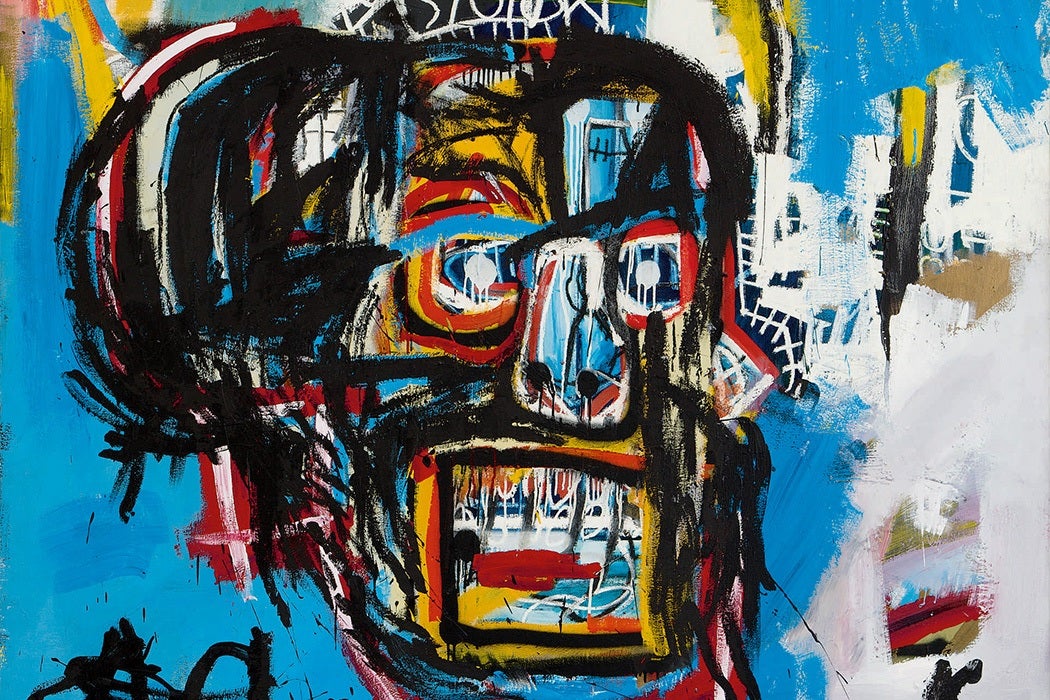Last month, Jean-Michel Basquiat’s 1982 painting Untitled broke records as the highest selling US-produced artwork, selling for $110.5 million at auction. Six years prior to this record-breaking sale, Laurie A. Rodrigues explored Basquiat’s work in her article “SAMO as an Escape Clause: Jean-Michel Basquiat’s Engagement with a Commodified American Africanism.”
Rodrigues explains that Basquiat’s early nom-de-plume “SAMO©” (the abbreviation for “same old shit”) was emblematic of some of the themes that would underlie his work for his short life: “the critiques presented by the SAMO graffiti speak to the artist’s alertness to high art’s disingenuousness and the racist, unfair practices of the American mainstream media.”
Basquiat entered the art scene in the late ‘70s by painting deceptively simple figurative forms, words, and symbols. His work was featured in a group show in 1980 and received critical acclaim in part for his distinctive style and his dramatic shift away from previous artistic styles driving previous artists. Rodrigues explains, “After a long phase of Minimalist domination in the world of high art, an assimilated Abstract Expressionism featuring more personalized and subjective figurative imagery came to the fore, characterized by its psychological and conceptual undertones.” Basquiat’s unique style and subjects—featuring figurative drawings such as people, faces, dogs, and houses combined with words and phrases—disrupted previous abstract and minimal artistic styles that had dominated the field before him with works such as Jackson Pollock’s hallmark drip paintings and Mark Rothko’s expansive two-toned canvases.
Unfortunately, much of the white art world and critics overlooked, oversimplified, and exotified Basquiat’s work because of his heritage. His father was Haitian and his mother Puerto Rican, and Rodrigues notes that “he was widely and wrongly aligned with traditional, ‘ethnic’ Haitian art….Basquiat’s singularity in the predominantly white world of high art led to his being dubbed the ‘messiah’ of his race’s art, redeeming the reputation and heritage of his ‘people.’”
Basquiat used his work to address his own pressing concerns about “race, human rights and the creation of power and wealth.” In doing so, he packaged and commodified his unique experience as a black American in his paintings—and the art world bought this work, whether they understood the complexity of his underlying messages or not.
Basquiat broke the mold of the predominantly white art world by undermining assumptions and authority from within. “Basquiat raises the issue that black identities are, essentially, not allowed expression within the authoritative, high-art world or within the mainstream media; and by the same token, the manner by which the mainstream distinguishes itself as an ‘authoritative’ entity exists because of this unsettling population of ‘outsiders’ — black American artists.”
Basquiat’s work is enduring and continues to break the art world mold, as his latest record-breaking sale demonstrates.







